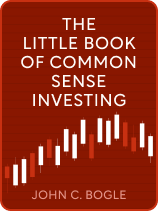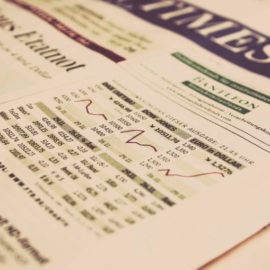

This article is an excerpt from the Shortform book guide to "The Little Book of Common Sense Investing" by John C. Bogle. Shortform has the world's best summaries and analyses of books you should be reading.
Like this article? Sign up for a free trial here.
What exactly is compound interest? Do index funds benefit from compounding?
Compound interest is the interest earned on reinvested gains. Because interest compounds over time, your money grows exponentially instead of linearly. However, your losses also compound, which means that your actual return on investment might not match the market’s average return.
Here’s what you should know about the effect of compound interest.
The Power of Compound Interest
Bogle notes that the small differences in returns between mutual funds and index funds yield outsized long-term results because interest compounds over time—in other words, it grows exponentially instead of linearly.
To see the effects of compound interest on index funds, imagine two funds: a mutual fund that earns 8% annually, and an index fund that earns 9% annually. If you initially invested $100,000 in each fund, they would deliver the following returns over time:
- After one year, the mutual fund would return $108,000, while the index fund would return $109,000.
- After 10 years, the mutual fund would return $216,000, while the index fund would return $237,000.
- After 50 years, the mutual fund would return about $4.7 million, while the index fund would return over $7.4 million
So, while a 1% difference would only cost you $1,000 after the first year, it would cost you over $2.7 million after fifty years!
The Reality of Compound Interest in a Volatile Market
Although compound interest’s impact is straightforward when annual returns are stable—say, at 9% annually—its effect is less straightforward when returns are volatile. The stock market, for example, is notoriously volatile. Stocks experience frequent price swings, and although the market increases about 10% annually on average, it also drops 30% every 12 years, on average.
To see how this bears on compound interest, imagine that you invest $1,000 in an S&P 500 index fund for two years, and the market increases by 10% in the first year and drops 10% the second year. In this case, you would have $1,100 after one year, but only $990 after two years, because 90% of $1,100 is $990. So, although the average market return was 0%, you would have actually lost money.
In other words, your losses also compound when the market dips. In practice, this means that your actual return on investment might not match the market’s average return. For instance, although the Dow Jones—a prominent US stock index—grew an average of 7.3% annually in the twentieth century, the compounding of market drops means that an investor in 1900 would’ve only earned about 5% annually by 2000.
To offset compounded losses in down markets, experts recommend various strategies, such as purchasing bonds or emphasizing stocks that pay dividends. These investments can provide financial protection even during bear markets (prolonged periods of declining stock prices).

———End of Preview———
Like what you just read? Read the rest of the world's best book summary and analysis of John C. Bogle's "The Little Book of Common Sense Investing" at Shortform.
Here's what you'll find in our full The Little Book of Common Sense Investing summary:
- A simple winning strategy for novice investors
- Why index funds are superior to mutual funds
- Why bonds belong in your investment portfolio






